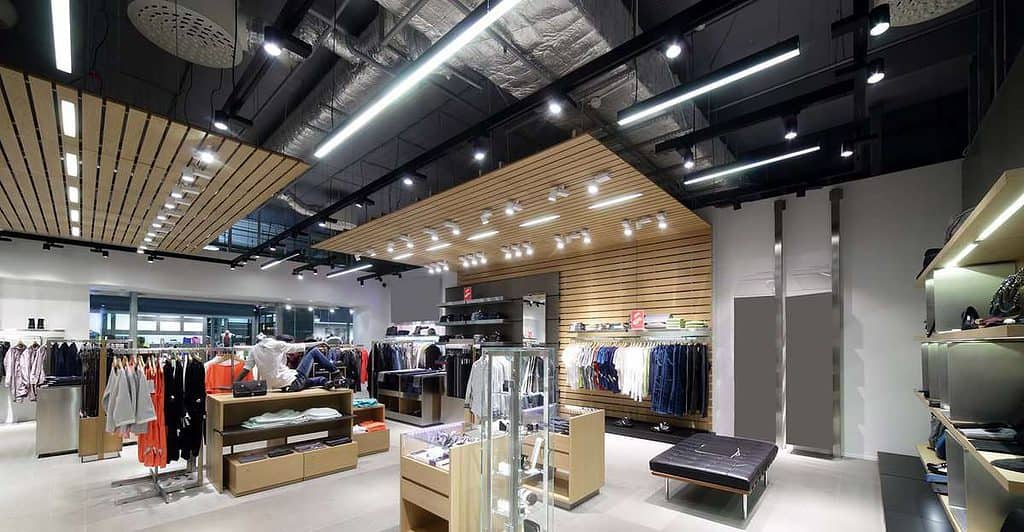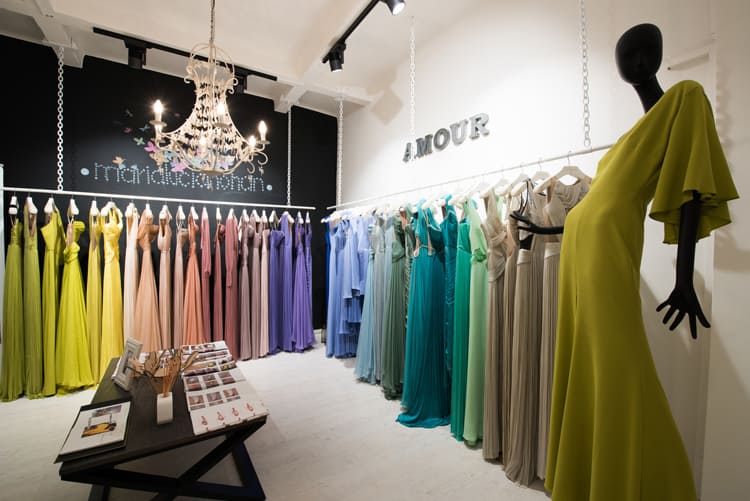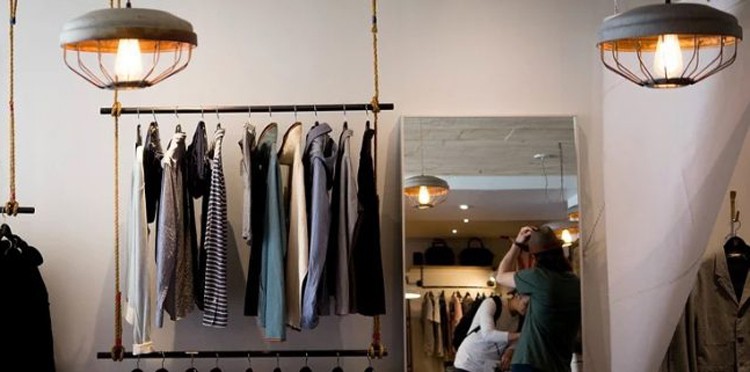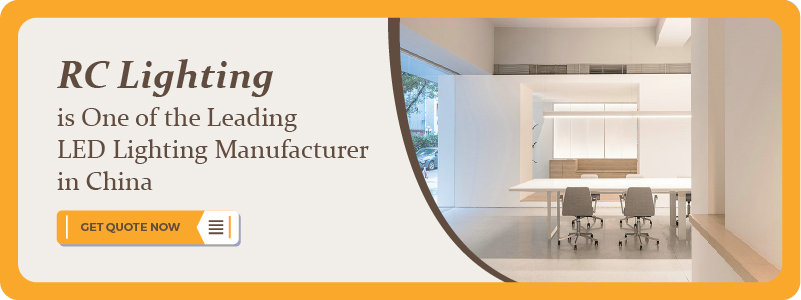If you have a clothing store, using the right lights can help you attract more customers, retain them in the long run, and as a result, increase your daily sales.
One of the best options you can try is LED lightings because they’re the easiest to install and by far the most effective. You can use them as your standard clothing store lighting because they’re more welcoming and meet the buyers’ needs and expectations.
If you’re looking to set up a good lighting system for your store, there are a few things to keep in mind. Adequate and well-planned lighting arrangements can result in different items being highlighted in the best manner possible. Such an arrangement will also be very motivating for employees and attract the attention of buyers to see your great merchandise. A proper lighting setup can do much more. Good retail lighting, for example, will stand out and present itself as welcoming, offering good vibes at your clothing store while also drawing customers’ attention to your products.
Let’s now discuss different types of retail lighting and all the things you need to choose the best lighting for your clothing store:
Types of Light Bulbs
1. Incandescent
These light bulbs are very reasonably priced. They give a warm white glow and have a high ranking on the CRI index, which tells us that the illumination of a different range of colors would be more vibrant and accurate.
Even though incandescent lighting has a good illumination factor, they consume more electricity than some of their more power-saving alternatives.
With that factor in mind, people still prefer this type of lighting as their standard and general lighting for their stores.
2. Halogen
These bulbs are an improvement from incandescent. They’re proven to be more power saving, consuming less electricity, and, hence, being a bit gentle on the electricity bills. The light offered by halogen bulbs is almost the same as incandescent bulbs but much more cooler in tone.
Even though halogen lights also have a perfect CRI, the only downside to halogen bulbs is that most have a shorter life span than the previous one.
3. Fluorescent
Fluorescent bulbs are a popular choice for general lighting as they use less energy and have a longer lifespan than incandescent and halogens. One of the best things about fluorescent bulbs is they come in a range of color temperatures.
These bulbs need to be hoisted and fixed on to function properly. Gradually, that can also lead to repairs, maintenance, and replacement.
4. LED Lights
LED lights can be your best go-to option when choosing store lighting. They’re flexible and can be used in many areas of the store. LED lights are also available in many temperatures and color types, with an average CRI rating of above 85 to 90.
There’s a chance that they might end up being a little expensive, but they’re very efficient in saving electricity and are more long-lasting than others.
What Types of Lighting Do Retail Stores Use?
1. Ambient Lighting
As you can tell from the name ambient, it stands for ambiance, which basically means the environment and overall surroundings of any place. This type of lighting can create a certain vibe and surrounding in your store to send a pleasant and welcoming gesture to the customers and ultimately grab their attention.
When your store’s lighting is too dim and has dark spots, it becomes gloomy, making it hard to check out and fully appreciate a product and its details.
You should watch out for the bright lights. People don’t appreciate lights that are too bright because they hurt the eyes. The best thing to do to avoid overly brightening up your store is to check the size of the store and assess the required lighting accordingly.
If you’re looking for a great big warehouse-style space with high ceilings, then that would require bright lights due to them hanging from a certain height. In this case, they have to be powerful enough to focus and light up the store. Otherwise, if your store is smaller, you wouldn’t need to have such bright lighting; dim lights would work great too.
2. Task Lighting
One of the things that these task lightings do is focus on specific areas of the store and highlight them. You’ll find an example of such lighting in the dressing and fitting rooms. These rooms require specific lighting to help the customers check their outfits and try them to see if it’s the right choice.
Other than that, the employees working at your store would also benefit from such an arrangement of lighting in doing their assigned tasks efficiently.
You can also utilize task lighting in signs and entrances to the store, which would help your store’s name stand out, looking more prominent while offering the viewers and outsiders a welcoming gesture.
3. Accent Lighting
Accent lighting is utilized for shedding light and focusing on specific areas, but this is more exclusively done to single out a particular item from the rest, making it stand out for customers to see. This lighting is perfect in seeking and diverting the customers’ focus towards anything you’d like them to check out.
In addition, accent lighting can also be used in advertising products and displaying them on the windows to show the potential customers that these products are hot-selling.
4. Decorative Lighting
Decorative lights are used to decorate and make something more cheerful and light it up. These are often used to re-create a specific type of feeling, more related to the celebration of a particular event such as Christmas, Halloween, etc.
Depending on the nature of the event, decorative lighting can be customized and made appropriately for that event.
Which Light is the Best for the Boutique?
Natural lights, also known as warm white lights, are highly recommended for a boutique. You can also use accented or spotlights to draw attention to the merchandise you want to showcase. The best thing I like about spotlights is that you can angle them in any direction from the ceiling – be it upward or downward to highlight the items on a round clothing rack. In addition, spotlights work great in highlighting your featured merchandise and representing your clothing store’s signature products.
The customers may get attracted to your store or decide not to enter the store depending on the products you have highlighted. Check the spotlights from every angle that a customer might see. You wouldn’t want anything else to be illuminated.
How Do You Light a Boutique?
1. Ambient Lighting
As mentioned earlier, the ambiance of a store has a huge influence factor on employees and the incoming customers. The right light setting can help the employees work better, and the buyers make better choices in selecting things.
However, ambient lighting, such as recessed lighting, does more than that. Consulting with an expert in this matter would be very beneficial as they can help create a positive shopping experience for everyone in your boutique and customers.
2. Choice of Lights
You should try to match the lighting style with the store’s ambiance and select the right type of lighting based on your store’s nature. Generally speaking, new and improved lighting can be helpful in a clothing store whereas, in others, you’d have to go with a more traditional type of lightings and colors.
If you’re a high-end store, then perhaps using expensive fixtures can help along with the right furniture and flooring, giving it a more elegant, high-end, and prominent environment to the customers.
Using upholstered chairs for an upscale clothing boutique can also add to your store and give it more depth. In short, the lighting style is the key to defining and setting the mood for your store.
3. Color
Various clothing stores have installed colored lights to focus on a particular thing – hence, color plays an essential role. For example, a grocery store may use red lights to make the fruits or vegetables appear riper. On the other hand, incandescent lights provide a yellow hue that makes diamonds appear yellowish. Therefore, many jewelry showrooms use high CRI downlights or compact fluorescents to complement their jewelry.
As yellow diamonds are not as expensive as clear blue-white diamonds, jewelry showroom owners display the diamonds on dark grey or black fabric instead of white.
4. Shelve Lighting
Under-the-shelf lighting illuminates the contents of the shelf below. The lighting must be high enough so that the customers do not bump into it when reaching for merchandise. Also, you should make sure that the lighting does not fade the merchandise.
How Do You Put LED Lights On Clothes?
To put LED lights on your clothes, you have to sew them on the shirt or other garment. The process is similar to most general hand-sewing projects, except you will need a conductive, metallic thread to make the LEDs light up. You will also need a battery and a switch to turn the LEDs on and off.
Steps to Put LED Lights on Clothes
Here are the easy steps you need to follow to put LED lights on your clothes:
Step 1: Use the Needle Nose Pliers
You can use needle-nose pliers to bend the long head of each LED into a coil. The positive lead or anode is typically the long head or thin metal strand that sticks out the light.
Step 2: Bending the Negative Leads
You need to make a coil out of the negative terminal of each LED. Make the coil triangular or slightly square to distinguish the coil from the positive terminal.
Step 3: Arranging the LEDs
Once you are done bending the negative leads, arrange the LEDs in an appealing pattern on the front of the garment, then use the disappearing ink marker to draw lines connecting the positive leads of each LED to another. Connect the negative leads with another line. Do not allow the negative and positive lines to intersect or touch at any point.
Step 4: Cutting the Length of Conductive Thread
You need to thread the sewing needle with the length of the thread. Make a knot at the opposite end of the thread.
Step 5: Pushing the Needle through the Garment from the Fabric’s Back
Bring the needle through the garment from the back and up through the positive coil of an LED to secure the stitching. Continue sewing around the coil until it is securely attached to the material.
Step 6: Stitching the Positive Coils along the Line
Stitch along the positive coil line you drew until you reach the next LED. Sew around the positive coil of the LED to secure it to the fabric. Continue sewing along the line, securing the rest of the LED’s positive leads. Once you have sewed the LEDs in place, make a row of about five stitches after sewing all of the LEDs in place, place the battery holder next to the stitches.
Step 7: Sewing the Battery Holder’s Positive Lead
Sew the positive lead of the battery holder to the fabric in the same manner that you did the positive leads of the LEDs. The lead should be preceded by a “+.” Remove any excess thread.
Step 8: Rethreading the Needle with a Fresh Spool of Conductive Thread
Rethread the needle with the new spool of conductive thread. Sew the negative leads of each LED down the same way you did the positive leads. Do not connect the battery’s negative lead to the fabric.
Step 9: Sewing One Half of the Metal Fabric
Sew one-half of the metal snap to the fabric using the conductive thread from the negative leads. Sew the other half of the snap with the negative thread to the material. Place the second half of the snap so that the snaps can be pushed together to complete the circuit. Your LEDs will be turned on or off by the snaps.
Step 10: Stitching From the Second Snap to Battery’s Negative Lead
Stitch from the second snap to the battery’s negative lead. Sew the negative lead down the same way you sewed the positive lead.
Step 11: Trimming the Conductive Head
Trim the conductive head. To prevent fraying, apply a dab of white glue on the ends of the thread. A short can occur if the cable frays.
Step 12: Turn on the Magic!
Push the two snaps together to watch the garment light up!
Lighting – Basis of Good Attraction and Ambience!
In this day and age, things are constantly changing with many things involved in choosing the best lighting for your retail or clothing store, including bulbs and fixtures, accent, task, decorative, ambient lighting, etc.
You should choose the best light bulbs, keeping in mind that this will help attract more customers and guide them in the store. Having the best lighting design can get a bit expensive and overwhelming, so you should always plan your budget accordingly – and this is where we come into the picture.
Our experts at RC Lighting can help you plan the best lighting design for your clothing store. Send your inquiry now!









